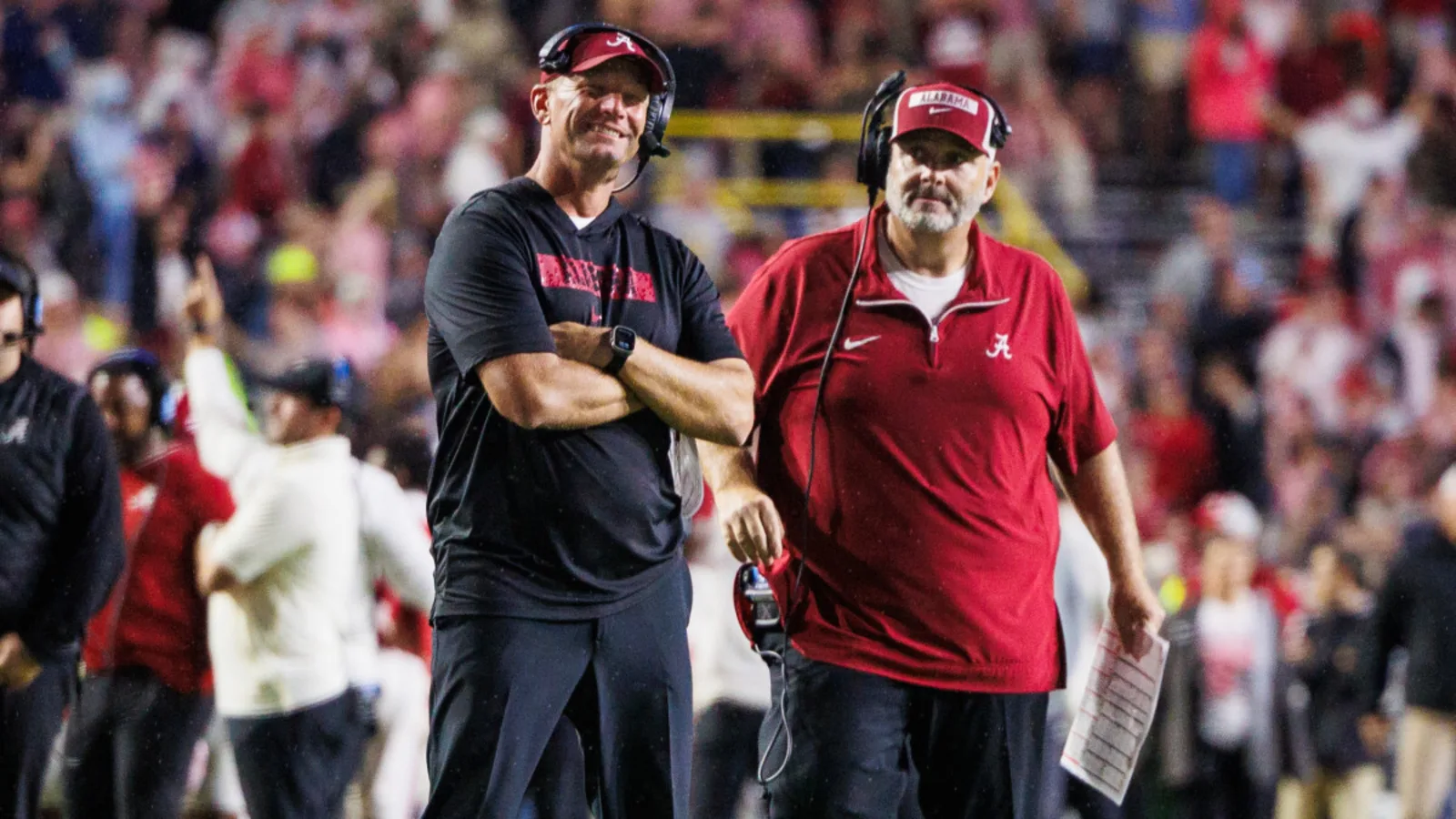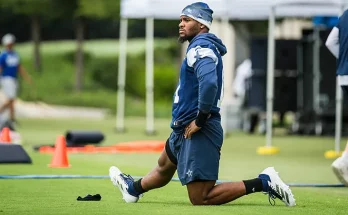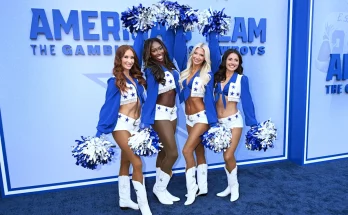In the ever-evolving landscape of college football, few programs command as much attention as the University of Alabama. Known for its storied tradition, championship pedigree, and relentless pursuit of excellence, Alabama has long set the standard for what it means to be a powerhouse in the sport. Recently, ESPN’s Paul Finebaum, a leading voice in college football analysis, remarked that Alabama, along with its newly appointed offensive mastermind Kalen DeBoer, is sending a bold signal to the rest of the nation—a signal that could reshape the way college football programs approach building their teams, coaching staffs, and ultimately, their legacies.
To understand the weight of Finebaum’s statement, it’s important to consider the context in which Alabama operates. The Crimson Tide, under head coach Nick Saban, has consistently dominated the college football scene, capturing multiple national championships and maintaining a pipeline of elite talent that floods the NFL annually. However, even a dynasty must innovate to stay ahead, and that’s where Kalen DeBoer’s arrival becomes a game-changer. DeBoer, a respected offensive coordinator with a track record of explosive, high-scoring offenses, has brought a fresh perspective to Alabama’s playbook and overall strategy.
Finebaum’s commentary isn’t just about football tactics or recruiting prowess; it’s about what Alabama’s approach signals to every program chasing glory in college football. The message is clear: invest decisively, innovate relentlessly, and be willing to recalibrate your entire operation to maintain supremacy in a sport that is constantly evolving.
One of the key areas where Alabama’s bold signal resonates is in recruiting. The Crimson Tide have long been known for their ability to attract the nation’s best high school prospects, but with DeBoer’s offensive system, Alabama is now positioned to offer recruits a style of play that blends tradition with modern excitement. This dual appeal is critical. Top recruits want to compete for championships, but they also want to showcase their skills in ways that highlight their future professional potential. DeBoer’s offense promises just that—dynamic, high-octane football that not only wins games but also prepares players for the next level.
Finebaum emphasizes that this is not merely a tweak in strategy but a seismic shift in how elite programs approach the game. Alabama’s investment in DeBoer and the accompanying expansion of their recruiting budget, as well as their willingness to double down on resources, sends a message that success requires not just talent but also infrastructure and innovation. This sets a new benchmark for other programs, especially those looking to break into the upper echelons of college football.
Moreover, Alabama’s strategy underlines the importance of adaptability. College football is no longer a game dominated solely by physicality and traditional schemes. It’s a complex chess match involving analytics, player development, and offensive creativity. By embracing DeBoer’s philosophy, Alabama is signaling that even the most successful programs cannot afford complacency. They must evolve with the times or risk being left behind.
Finebaum also points out that Alabama’s move impacts the broader coaching carousel in college football. As programs watch Alabama invest heavily in a top-tier offensive mind, it raises the stakes for coaching hires nationwide. Schools must now prioritize innovation and modern offensive expertise to stay competitive, a trend Alabama is clearly leading. This could accelerate the trend of younger, more offensively savvy coaches landing top jobs and shaking up traditional coaching hierarchies.
The ripple effect extends to how programs allocate their budgets. Alabama’s near doubling of its recruiting budget, coupled with strategic investments in coaching and facilities, underscores a larger truth in college football economics: championships come with a price tag. Finebaum’s insight reveals that Alabama’s approach is a strategic blueprint for others—spend smartly and invest in the right people and infrastructure to create sustainable success.
Another layer to this bold signal is the psychological impact on competitors. Alabama’s clear commitment to innovation and resources sends a message to rival programs that the bar has been raised. It challenges the status quo and forces competitors to reconsider their own strategies and investments. This could lead to a more competitive and exciting college football landscape, where programs are constantly pushing each other to new heights.
For fans and analysts alike, Alabama’s collaboration with Kalen DeBoer is more than just a coaching change—it’s a statement of intent. It’s a declaration that Alabama will not rest on past laurels but will continue to lead the charge in college football’s evolution. This boldness is what Finebaum highlights as the defining feature of Alabama’s current trajectory.
In conclusion, Paul Finebaum’s observation that Alabama and Kalen DeBoer are sending a bold signal to college football encapsulates a fundamental shift in how top programs operate. Alabama’s investment in innovation, coaching, recruiting, and infrastructure sets a new standard, compelling others to elevate their game or risk falling behind. This isn’t just about winning games; it’s about shaping the future of college football itself. As Alabama continues to lead with vision and ambition, the entire sport watches, knowing that the Crimson Tide’s bold signal might just redefine what it takes to be the best.



